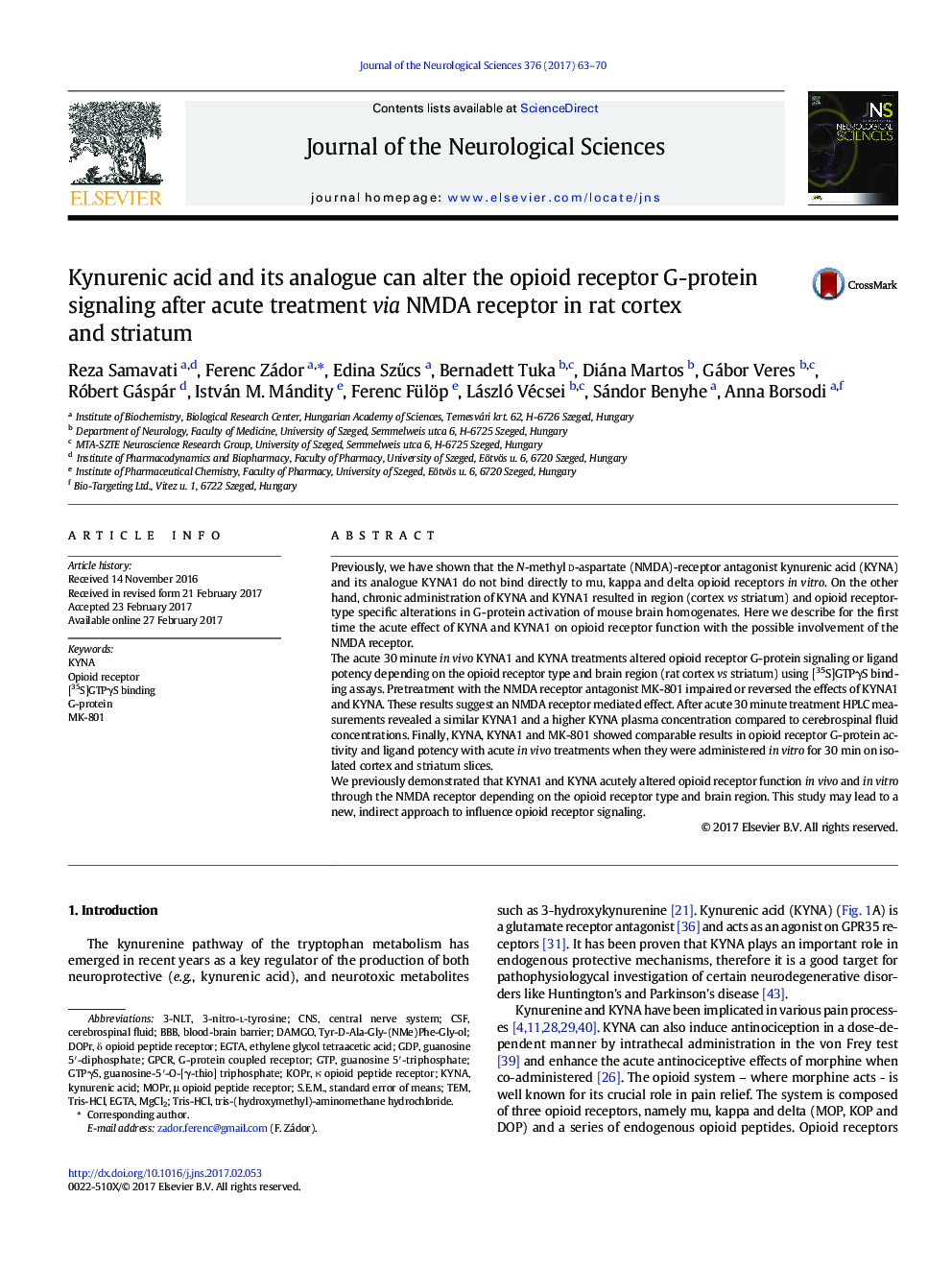| Article ID | Journal | Published Year | Pages | File Type |
|---|---|---|---|---|
| 5502877 | Journal of the Neurological Sciences | 2017 | 8 Pages |
Abstract
We previously demonstrated that KYNA1 and KYNA acutely altered opioid receptor function in vivo and in vitro through the NMDA receptor depending on the opioid receptor type and brain region. This study may lead to a new, indirect approach to influence opioid receptor signaling.
Keywords
GTPMOPrDopREGTAGTPγSMK-801GPCRS.E.M.3-nitro-l-tyrosineDAMGOG-protein coupled receptor[35S]GTPγS bindingethylene glycol tetraacetic acidkynurenic acidTemTris-HClGDPstandard error of meansCNSBBBcentral nerve systemBlood-brain barrierCerebrospinal fluidCSFG-proteinKYNAguanosine 5′-triphosphateguanosine 5′-diphosphateOpioid receptor
Related Topics
Life Sciences
Biochemistry, Genetics and Molecular Biology
Ageing
Authors
Reza Samavati, Ferenc Zádor, Edina Szűcs, Bernadett Tuka, Diána Martos, Gábor Veres, Róbert Gáspár, István M. Mándity, Ferenc Fülöp, László Vécsei, Sándor Benyhe, Anna Borsodi,
